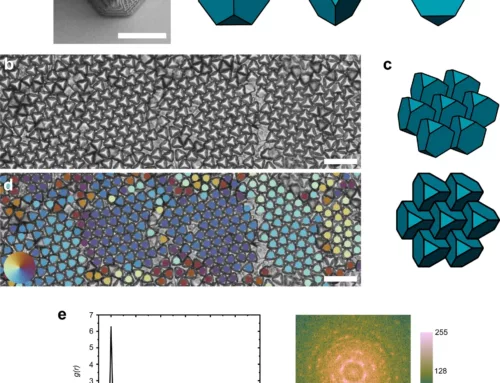In a remarkable breakthrough, physicists from the Rheinland-Pfälzische Technische Universität Kaiserslautern-Landau have ventured into the realm of ultracold quantum chemistry, unveiling the creation and characterization of trilobite Rydberg molecules in rubidium. Led by Professor Herwig Ott, this pioneering study, recently published in Nature Communications, pushes the boundaries of quantum chemistry at ultralow temperatures.
Unveiling the Potential of Ultracold Quantum Chemistry
The team’s focus on engineering controllable molecules in ultracold conditions provides a unique gateway to ultracold quantum chemical reactions and essential physics tests. By harnessing the capabilities of molecules with significant electric dipole moments, the researchers pave the way for advancements in quantum information processing and the generation of highly correlated many-body systems.
Dipolar Molecules and Coherent Wave-Packet Dynamics
The utilization of ultralong-range Rydberg molecules becomes a key element in generating dipolar molecules within ultracold environments. Particularly, molecules with multiple vibrational states, suggested for creating superposition states through electric field pulses, unfold the potential for observing coherent wave-packet dynamics.
Experimental Marvel: Trilobite Molecules at Ultralow Temperatures
The experimental journey involves cooling a cloud of rubidium atoms to an astonishingly low temperature of about 100 microkelvin, a mere 0.0001 degrees above absolute zero, in an ultra-high vacuum. Laser-induced excitation of some atoms into a Rydberg state leads to the formation of trilobite molecules, showcasing unique bonding characteristics distinct from conventional chemical bonds.
Quantum Mechanics Behind Trilobite Molecule Formation
Dr. Max Althön, the study’s first author, sheds light on the quantum mechanical scattering of the Rydberg electron from the ground state atom, explaining the fascinating process of trilobite molecule formation. The effective attraction between the electron and the ground state atom, arising from quantum collisions during rapid orbits, results in the distinctive bonding characteristics observed.
Unprecedented Properties of Trilobite Molecules
The resulting trilobite molecules exhibit unparalleled properties, marked by an interference pattern resembling a trilobite due to multiple collisions. Notably, the bond length surpasses that of any other diatomic molecule, extending as far as the Rydberg orbit. The permanent electric dipole moment of these trilobite molecules reaches an impressive 1,700 Debye.
Beyond Boundaries: New Frontiers in Ultracold Quantum Chemistry
This groundbreaking research not only expands our understanding of ultracold quantum chemistry intricacies but also offers valuable insights into the formation and characteristics of these unique molecules. The team’s findings contribute significantly to the advancement of fundamental physics and hold promise for potential applications in quantum information processing.
Source: https://www.nature.com/articles/s41467-023-43818-7




